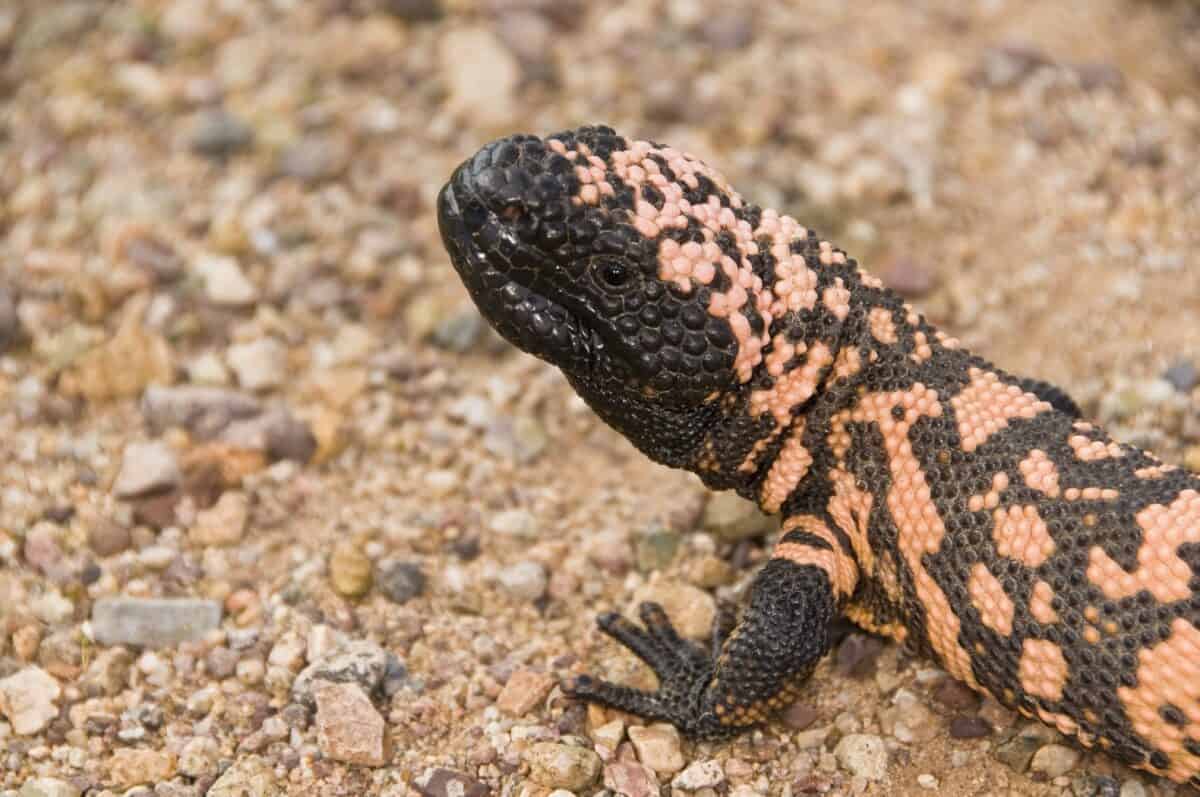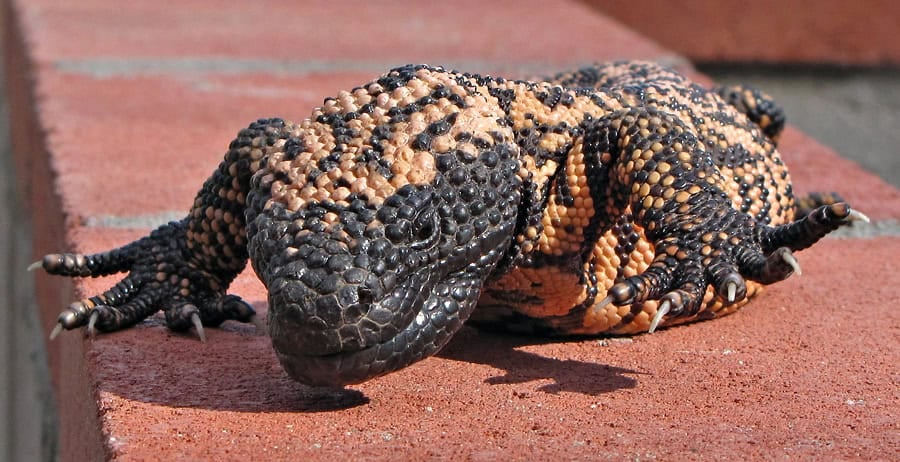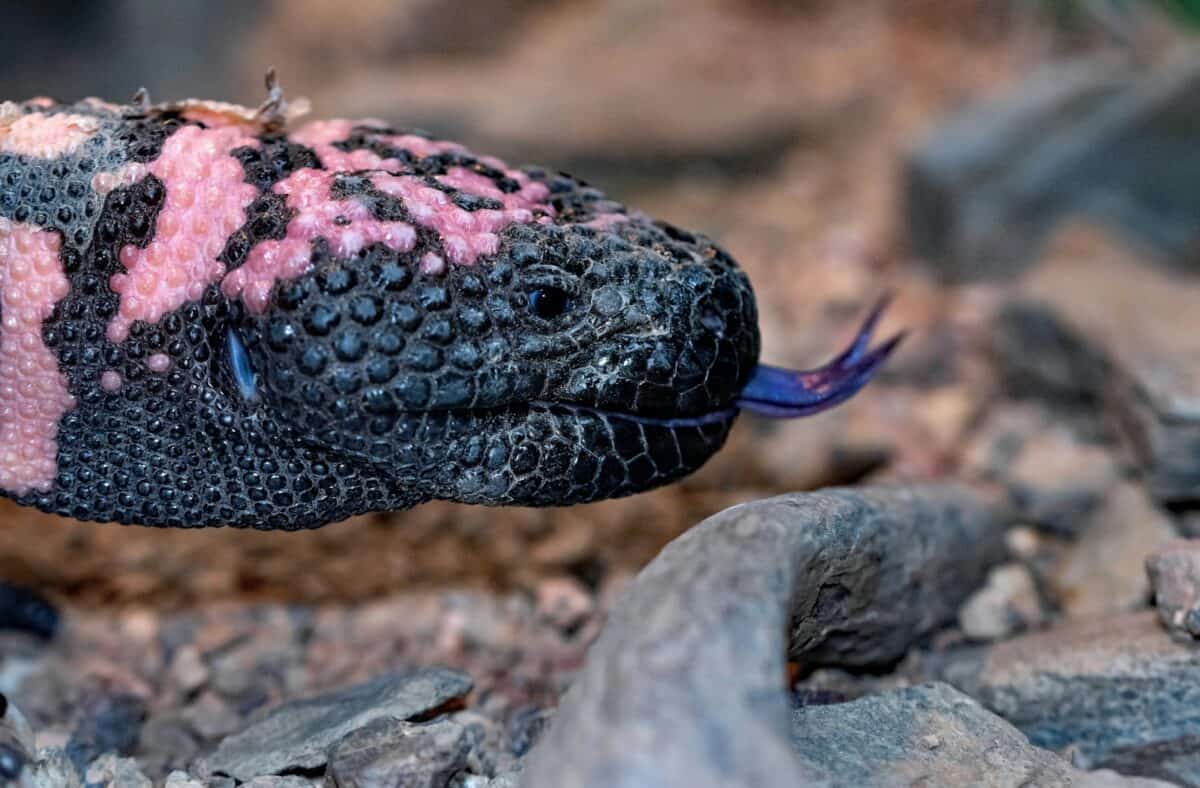The Gila monster (Heloderma suspectum) is a fascinating creature that captures the interest of many due to its unique traits and formidable reputation. As one of the few venomous lizards in the world, the Gila monster makes its home in the arid landscapes of the southwestern United States and northwestern Mexico. However, despite its fearsome name, the Gila monster poses little threat to humans and is more noted for its striking appearance and interesting survival adaptations.
Distinctive Features and Habitat

The Gila monster is easily recognized by its brightly colored skin, adorned with patterns of orange, pink, or yellow interspersed with black scales. This armored exoskeleton not only aids in protection against predators but also assists in camouflaging within its desert habitat. Measuring up to 2 feet in length and weighing between 3 to 5 pounds, the Gila monster is a robust lizard that thrives in scrublands, desert valleys, and rocky slopes where it can find ample shelter and food.
The Venomous Strike

While the Gila monster’s venom is its most renowned feature, it plays a dual role in both offense and defense. Contrary to the quick-striking nature of venomous snakes, the Gila monster employs a more deliberate approach. When it perceives a threat or captures prey, it bites down with a powerful jaw pressure, effectively “chewing” its venom into the wound. The venom is delivered through grooves in the lower jaws, rather than hypodermic fangs, which makes the process slower but nonetheless effective.
The venom, a complex mixture of proteins, affects the nervous system and blood flow of the prey, ultimately leading to incapacitation. For deemed opponents, the bite serves as a strong deterrent rather than a lethal attack. Interestingly, humans rarely fall victim to these bites, and recoveries from Gila monster venom have been documented without major complications.
Diet and Feeding Habits

The Gila monster’s diet is predominantly carnivorous, consisting of bird eggs, small mammals, other lizards, and occasional insects. One of its unique adaptations is the ability to consume large meals infrequently, a trait that aligns well with the scarce resources of its desert home. Gila monsters are also adept at finding food underground, using their keen sense of smell to unearth nests and burrows. Their slow metabolism allows them to survive long periods between meals, only requiring a few large meals each year.
Survival Strategies

Three key strategies enable the Gila monster’s survival in harsh environments: thermoregulation, water conservation, and seasonal activity patterns. Being ectothermic, these lizards regulate their body temperature through behavioral means, often basking in the sun to warm up or retreating to cool burrows to avoid overheating. They are most active during the cooler parts of the day, such as early morning or late afternoon, to conserve energy.
Additionally, the Gila monster conserves water efficiently through its handling of dietary intake and minimal water loss. With most water derived from its prey, the lizard rarely needs to drink, a critical adaptation for desert survival. Its skin, too, plays a role in water retention, providing a semi-permeable barrier securing internal hydration.
Conservation and Challenges

Despite their adaptability, Gila monsters face threats from habitat destruction and illegal collection, which have led to their classification as a species of concern. Conservation efforts are in place to protect their natural environments and regulate their population through education and policy enforcement.
Conclusion

The Gila monster is much more than a venomous curiosity; it is a marvel of evolutionary design tailored for survival in one of the planet’s most unforgiving landscapes. Through its potent venom, striking camouflage, and physiological adaptations, the Gila monster continues to intrigue scientists and nature enthusiasts alike, reminding us of the intricate balance within ecosystems and the diverse tactics employed by even the most inconspicuous of creatures.
- Why Bison Roll in Dust—And What It Means - August 10, 2025
- How Chameleons Use Independent Eye Movement to Hunt - August 10, 2025
- Animals We Eat (That Were Once Worshipped by Ancient Civilizations) - August 10, 2025

